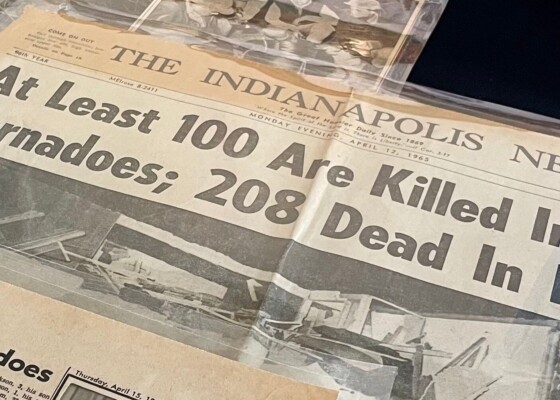Guillermo Del Toro’s Monstrous Inspiration
March 1, 2018This past weekend, Guillermo Del Toro and The Shape of Water took home big awards during the 90th Annual Academy Awards. A celebrated filmmaker, Del Toro himself won his first Oscar…
This past weekend, Guillermo Del Toro and The Shape of Water took home big awards during the 90th Annual Academy Awards. A celebrated filmmaker, Del Toro himself won his first Oscar for Best Director while The Shape of Water won Best Picture alongside awards for music and production design! Del Toro’s newest film led the nominations with 13 Oscar nods, telling the story of an aquatic creature (not quite human, but not quite fish) played by Indianapolis’s own Doug Jones.
While the creature featured in this year’s acclaimed film is credited as “Amphibian Man,” Del Toro’s obsession with monsters extends far beyond aquatic depths of his most recent work. You may remember Pan’s Labrinyth, featuring surreal, sometimes terrifying creatures born from Del Toro’s own dreams. Or Mimic, where genetically modified cockroaches evolve to mimic their human prey. Or maybe even Pacific Rim, where the alien sea monsters, inspired by traditional Japanese giant monsters (Kaiju), threaten the world. With all this monstrous movie history, it’s unsurprising to learn that Del Toro is a fan of Mary Shelley’s Frankenstein.
According to Del Toro, after seeing James Whale’s 1931 adaptation and reading Shelley’s original, “…the book became my bible, because what Mary Shelley wrote was the quintessential sense of isolation you have as a kid. It’s the quintessential teenage book. ‘You don’t belong. You were brought to this world by people that don’t care for you and you are thrown into a world of pain and suffering, and tears and hunger, and you learn to talk.’” In fact, during his most recent BAFTA Best Director acceptance speech, Del Toro claimed that Mary Shelley “…has remained a figure as important in my life as if [she] was family.”
Certainly, the creature’s own isolation and the desire for connection he feels while watching the De Lacey family through a crack in the wall mirrors the isolation we can feel in our own lives. “What was I?” Frankenstein’s creature asks repeatedly. Monsters, and especially Del Toro’s monsters, are both terrifying and relatable. Del Toro claims, “Monsters are living, breathing metaphors.” They are ideas, human feelings, fears and desires given form – all through the magic of the movies. Perhaps the enduring quality of Shelley’s creature – the quality that imbues it with its resonance and repetition over two centuries – is that her metaphor is universal, common to us all. Shelley’s creature gave “voice to the voiceless, presence to the invisible,” Del Toro claims in his BAFTA speech, continuing, “Sometimes to talk about monsters, we need to fabricate monsters of our own.”
Del Toro claims that a true adaptation of Mary Shelley’s Frankenstein has never been made, and he has long hoped to do so. Perhaps one day, Del Toro will get to make this monster, but until then, his other creations give us plenty to consider. Monsters such as the Amphibian Man in The Shape of Water ask viewers to contemplate just how different we are from that which we call monstrous. As we commemorate the 200th anniversary of Mary Shelley’s Frankenstein, we’re given the opportunity to reflect on the ways in which Shelley’s seminal work influences the books, films, and stories we celebrate today. Del Toro’s big wins during the 90th Annual Academy Awards demonstrate both his achievements in film-making and the enduring ability of stories, like that of Mary Shelley’s creature, to inspire empathy and inclusion of others who may appear different than ourselves.


